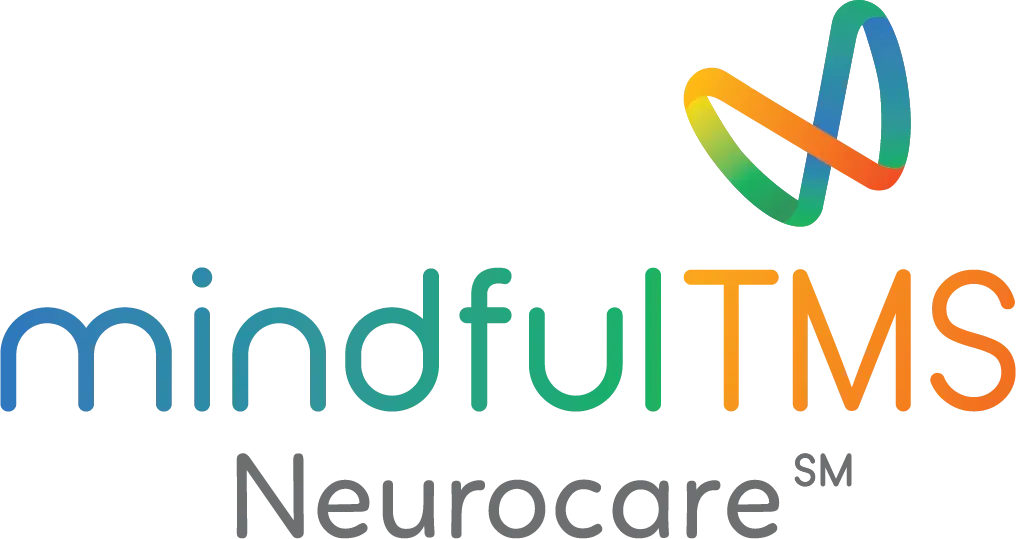Frequently Asked Questions
TMS & Neurocare & Psychiatric Services located in Chicago, Crystal Lake, Hinsdale, Wheaton, and Skokie, IL
Want to know more about TMS Therapy at Mindful TMS in Chicago?
Below are the most common questions we get asked by patients seeking treatment for depression, OCD, and other conditions in the Chicago area - and the answers to each. If you need help with a question that isn't answered, please contact us.
What is TMS therapy?
TMS is a non-invasive form of neuromodulation, which stimulates neurons in the prefrontal cortex by delivering highly focused MRI-strength magnetic pulses. TMS was FDA cleared in 2008 for the treatment of depression and in 2018 for the treatment of OCD in patients who have not benefited or had limited benefit from prior medication. Patients undergo treatment five times weekly for approximately six weeks, however it can vary on an individual basis. Patients remain awake and alert throughout the treatment, rendering TMS non-invasive. TMS is also non-systemic, therefore it is virtually free of adverse effects.
Understanding TMSWill my insurance cover TMS therapy?
MEDICARE and most major healthcare insurers have a coverage policy for TMS therapy. TMS is most likely covered by your insurance, and our team will assist you from start to finish. Our team can help to quickly evaluate this. You can give us a call directly and we will reply within a 24-hour time period, guaranteed.
What to expect with treatment?
During the treatment, the patient is seated in a reclined position in a comfortable treatment chair with the head supported in a relaxed position. The coil is usually positioned on the left front side of the head, over the part of the brain called the Left Dorso-Lateral Prefrontal Cortex (DLPFC). Short bursts of electricity are passed through the treatment coil, which in turn generate magnetic fields. The magnetic fields have the ability to pass unhindered through the scalp and create small electric currents in the targeted area of the brain. These electric currents depolarize or activate nerve cells in the region of stimulation. Clinical studies have demonstrated that repetitive magnetic stimulation of the DLPFC to be safe and effective in treating patients with depression.
What To ExpectWho are good candidates?
Currently, TMS therapy is FDA approved for the indication of Major Depressive Disorder and Obsessive Compulsive Disorder. TMS should be strongly considered by patients who have failed to receive satisfactory improvement from prior antidepressant medications and/or have experienced intolerable side effects.
- Addiction Remission
- ADHD
- Anxiety
- Bipolar Depression
- Chronic Pain
- Eating Disorders
- Insomnia
- Multiple Sclerosis
- Parkinson’s
- Postpartum Depression
- Post-Stroke Recovery
- Smoking Cessation
What are the results of TMS Therapy?
TMS is indicated for the treatment of Major Depressive Disorder in adult patients who have failed to receive satisfactory improvement from prior antidepressant medication in the current episode. Current literature indicates that approximately 50% of all treated patients who meet the above criteria respond to the treatment by bettering their Hamilton depression rating score by 50% or more. In OCD cases, approximately 1 in 3 medication-resistant patients achieved remission after four weeks. The Hamilton Depression rating is a multiple-item questionnaire used to provide an indication of depression. Approximately 35% of all treated patients are so-called remitters, bettering their Hamilton depression rating score to a score of 7 or less, meaning that they are depression free.
How does TMS work?
These magnetic fields are similar to those produced by a magnetic resonance imaging (MRI) machine. They do not affect the whole brain, as they only reach a few centimeters into the brain directly beneath the treatment coil. This provides an accurately focused and targeted treatment.
How does neuronavigation targeted TMS work?
Neuronavigation Targeted TMS is the future in providing patients with a precise and individualized TMS treatment. Neuronavigation Targeted TMS is an image-based navigation system for targeting TMS to an individual’s unique anatomical features, and matching those features to a “reference database”.
- Greater precision, yielding better results • Minimal to no side effects
- Enhanced patient comfort
Is TMS safe and are there any side effects?
TMS is very safe. In clinical trials and in real-life practice, TMS therapy is well tolerated and has been proven to be safe. In the US, over 1 million TMS treatments have been performed with little to no complications or side effects. The most commonly reported side effect related to treatment was mild to moderate scalp discomfort during treatment sessions. Scalp discomfort occurs less frequently after the first week of treatment. If symptoms do persist, over-the-counter analgesics may be taken.
When should TMS therapy not be used?
TMS therapy creates a magnetic field that could cause metal objects near the stimulation coil to move or get heated. Patients with non–removable magnetic-sensitive metals or metallic devices implanted in their head or in body parts near the stimulation coil should not receive therapy with the MagVita TMS therapy system. NOTE: Standard amalgam dental fillings are not affected by the magnetic field and are acceptable in patients.

